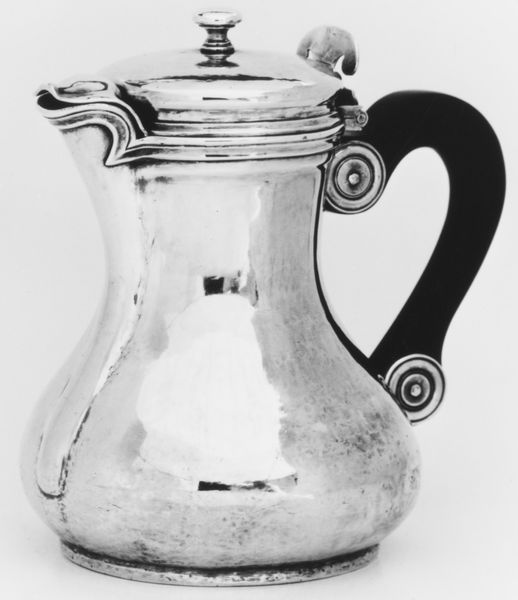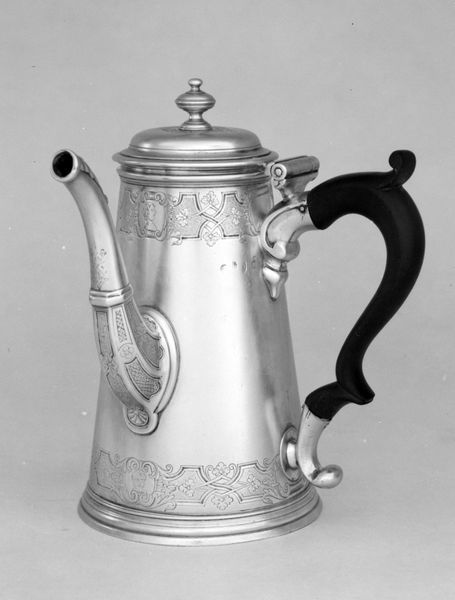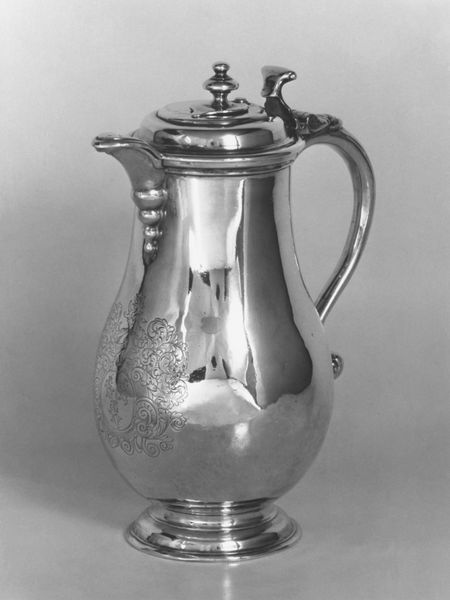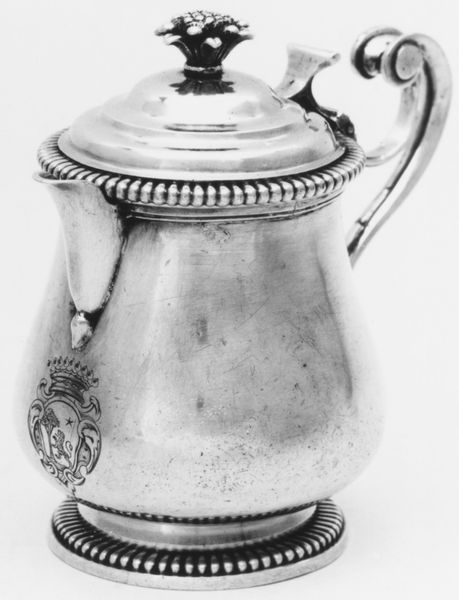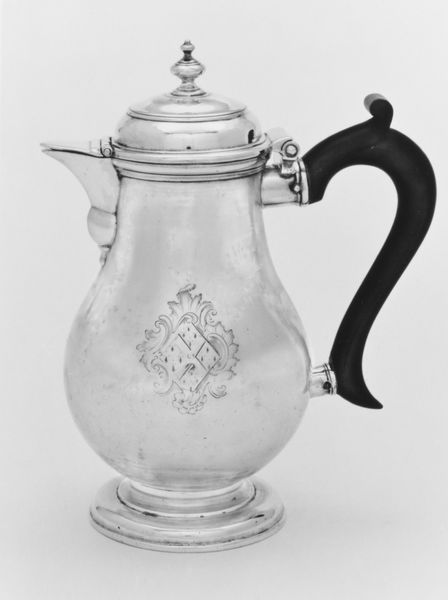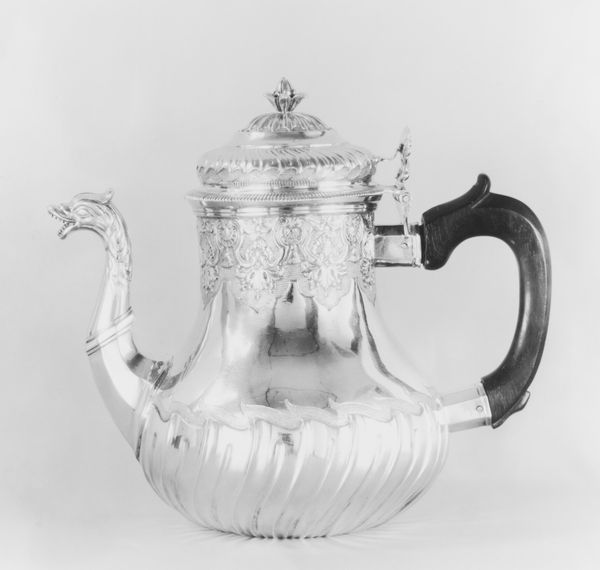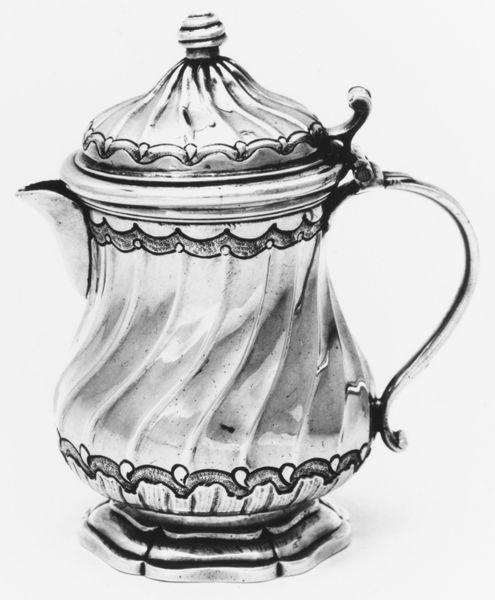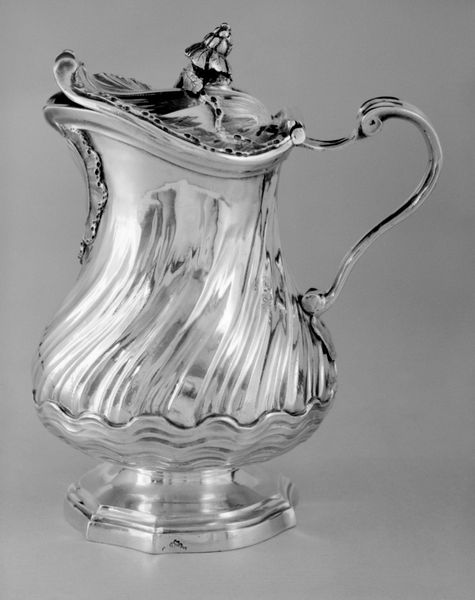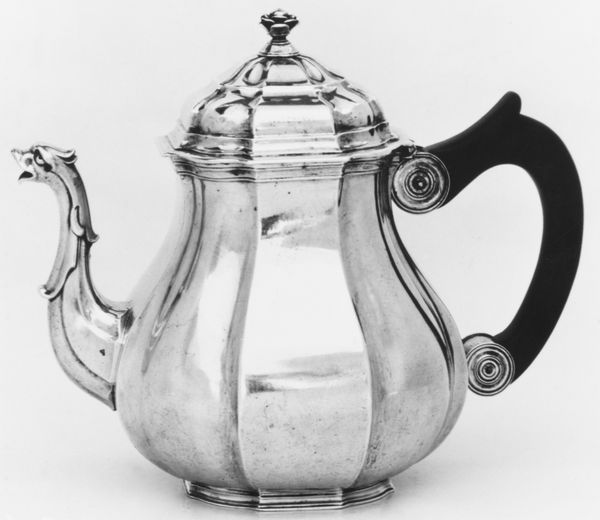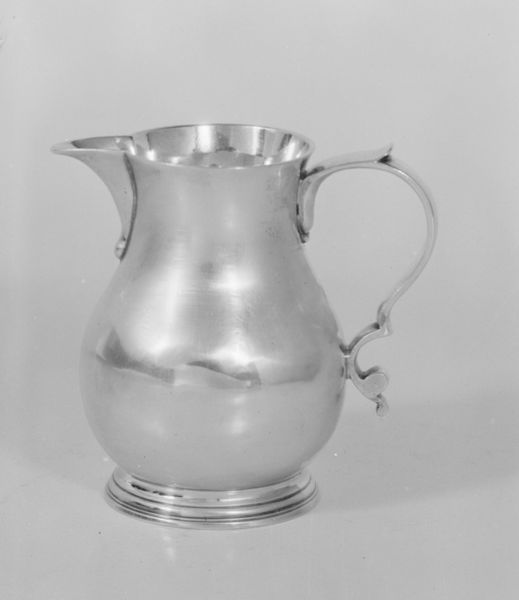
Dimensions: Height: 6 3/4 in. (17.1 cm)
Copyright: Public Domain
Curator: Oh, it practically sings of lazy Sunday mornings and gossip! This Coffeepot, crafted from silver around 1775 or 1776, is on display right here at the Metropolitan Museum of Art. Jacques-Pierre Marteau really knew how to elevate the mundane. Editor: It has an immediate visual appeal; its lines seem to swirl, capturing the eye and preventing it from resting on any one place. The dark, contrasting handle, against the bright body, forms an interesting chromatic dyad that underscores the sculptural dimension of the object. Curator: Absolutely. There's an almost rebellious glee in the decorative details. The Rococo style positively explodes with exuberance. See the swirling fluted body and elaborate cartouche—it’s pure theatre. But do you think it’s all for show? Editor: One can argue it transcends mere display, operating at a higher level of semiotic significance. Notice how the verticality, expressed through fluting, competes with the sinuous curves, manifesting a play between classical aspirations and rococo flamboyance. It seems to want to negotiate structure and style. Curator: That is true; but consider who commissioned these pieces. The rising bourgeois class wanted to broadcast their newfound wealth and taste. A simple pot becomes a statement piece, almost shouting, "Look at me!". I see that tension mirrored within it too, but wonder who enjoyed the last coffee poured. Editor: Precisely. Even its utilitarian function bows down to aesthetic ideals; each curve and contour serves to highlight not the drink itself, but the socio-economic status it implies. Think of how each addition is deliberately calibrated, achieving harmony across contrasting elements of metal and, what seems to be, either ebony or darkened wood in the handle, unified in their artistic impact. Curator: A powerful union that transcends mere practicality! I find myself pondering, after our brief study of it, on how the world can transform the simplest objects into cultural narratives that transcend its original utility, I wonder if we can escape imbuing such a narrative onto our very water bottles. Editor: A compelling idea; though that could open another set of hermeneutic possibilities, as well, but it does leave one wondering about art's role as a communicator beyond aesthetics, sparking deeper investigations into both form and function.
Comments
No comments
Be the first to comment and join the conversation on the ultimate creative platform.

